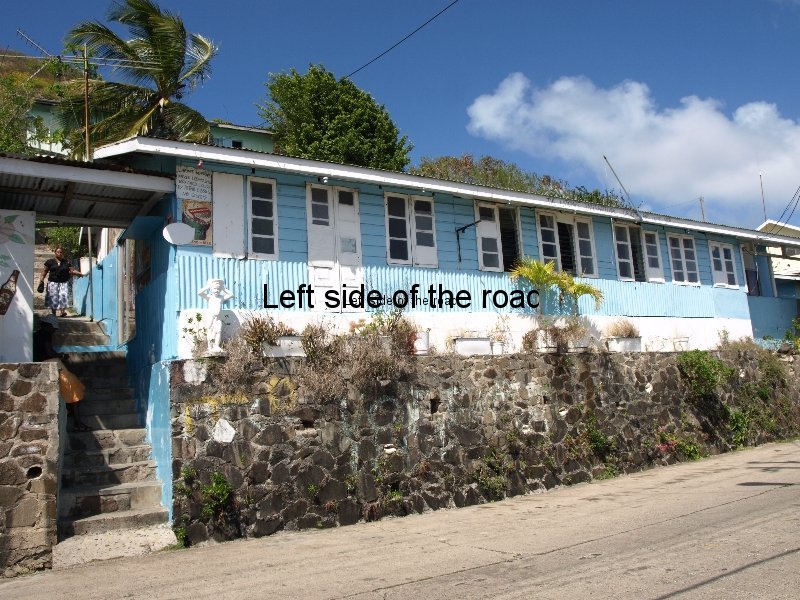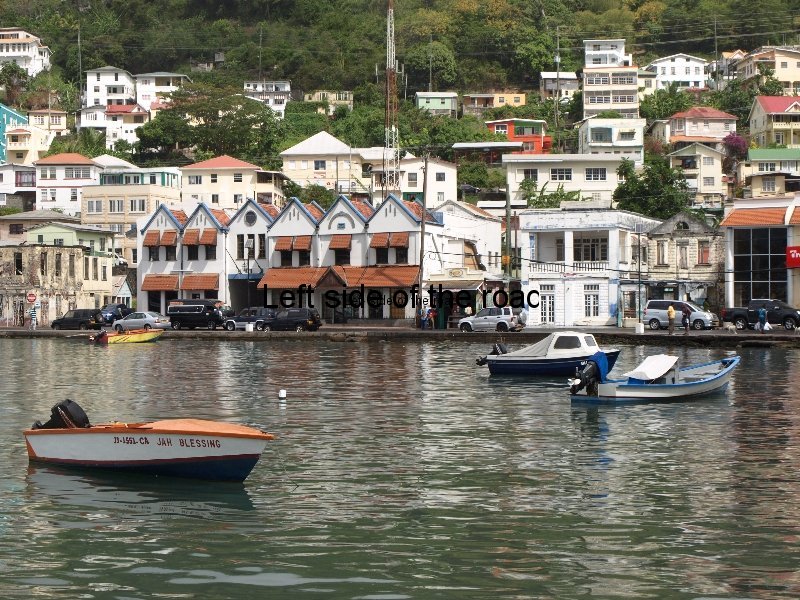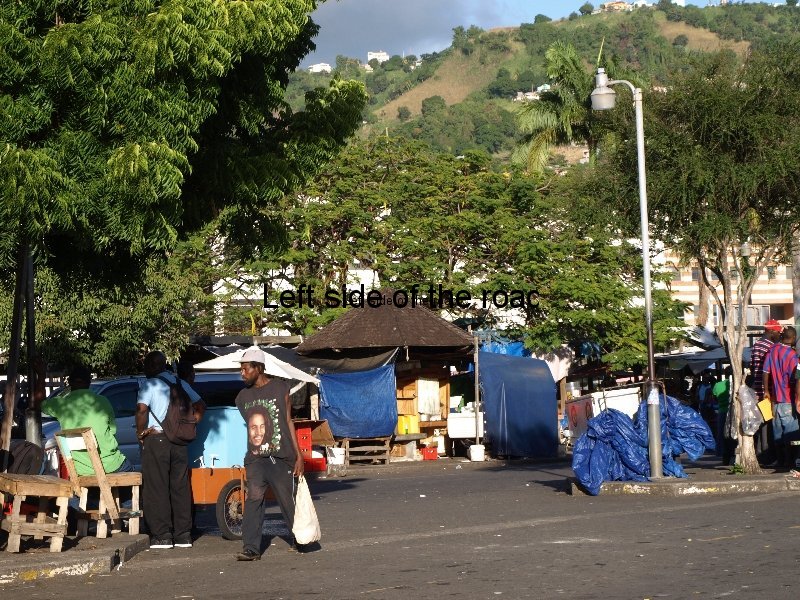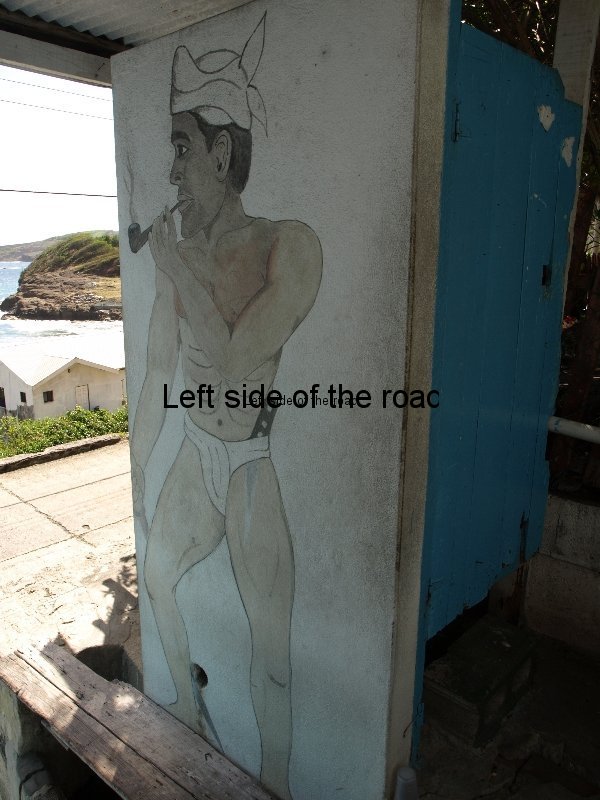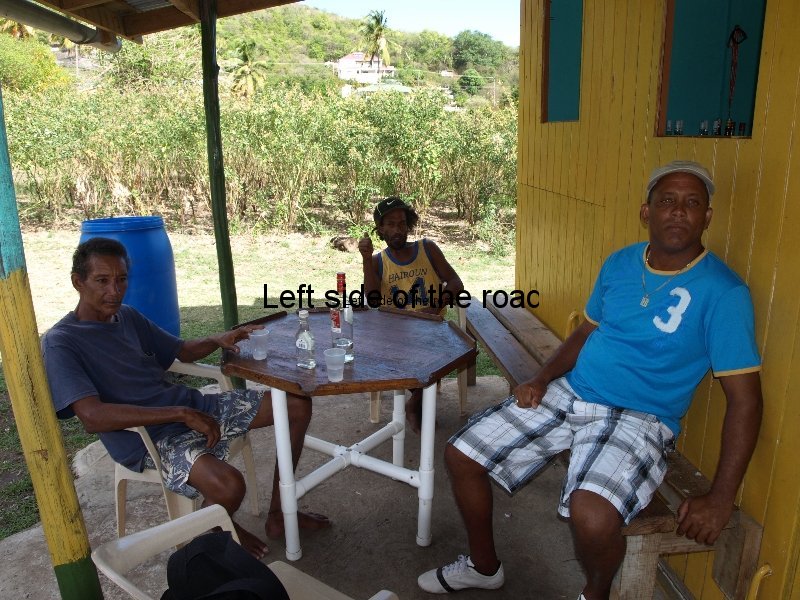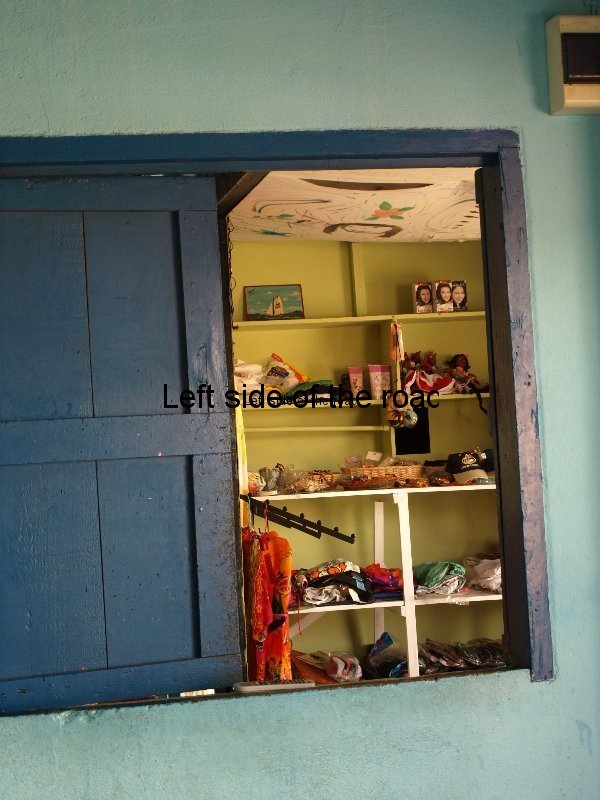More on sailing on a tall ship
‘Rum shack’ is the generic name for the basic bars that serve the rum in various measures in all of the Caribbean islands, or at least the handful I’ve visited. They are not built for luxury but are functional and serve their purpose, that is to get people as drunk as quickly as possible.
Although what they are there for is the same on whatever island they might also double up as something else when not serving the rum. One place I went to was the village local grocery store (although no one came in to buy groceries whilst I was there) and yet another was attached to a ‘fast food’ stall in the bus station in Kingstown, St Vincent, which I mentioned when I wrote about the creeping privatisation of the streets.
But before talking about the places that do the selling I should write about what is sold.
Although not exclusively these rum shacks are there to sell the double proof white rum, each island having its own particular favourite brand. It might come as no surprise to read that each islander thinks that the best rum is produced on his island. This, to me, is a bit academic as it is such strong alcohol that there is no real taste to talk of.
Double strength means 80% or more. The strongest one, commercially, I came across was the Sunset brand from St Vincent. That is 84% proof. That has a warning message on the back label about naked flames and inflammable liquids! But I’m sure that the home-made versions that are on sale in the streets and markets could well be higher in percentage.
There is also a bit of a ritual with this rum. In the first rum shack I went into, in Castries, the capital of St Lucia, the rum was served in shots in plastic cups. The woman behind the bar was also behind a home-made reinforced steel rod cage and the booze was served through tiny hatches. I never saw any trouble in any of the bars I went into but presumably the bars were there for a reason. The gateway to the bar area was never locked but then I was there in the afternoon or (relatively) early evening.
In ALL the places I went there was either a full bottle of iced water – normally in a bottle that once would have held the local rum – available on the counter for all to use or given to each individual customer.
How this was used was up to personal preference and depended on how quickly you wanted the rum to enter the system. Some would knock back a shot and then drink 2 or 3 cups of the iced water to prevent the burning sensation from becoming too great. Others would water down the shot and then drink it at a slower pace. The former method was definitely the option for those who would come into the rum shack for a quick drink and then move on – to another rum shack.
In most places the manner of it being served was not by the individual shot as in the Castries (the shot costing 2 Eastern Caribbean Dollars (about £0.50p)) but by the measure. There would also be quarter spirit bottles and you could ask for a full one of these, or just a proportion. This would be filled from a full bottle of the local brew. It was then for the customer to decide the quantity to be served in the plastic cup and the manner, although most locals seem to prefer the quick shot and then the cups of water. To give an idea about cost the normal price for a quarter bottle filled in this way was about 12EC$ and to put that into perspective a 1 litre bottle in a supermarket would cost about 30EC$.
I don’t know where it all came from but there were a number of these rum shacks, on the various islands that were called ‘People’s Bar’ or variations on that. The one I like was the Poor People’s bar in Grenville, on Grenada, which lived up to its name as there was virtually nothing on show. There was enough to serve for the day and no money seemed to be tied up in providing an inviting display but not earning anything. This was confirmed when I was speaking with the owner of the bar opposite the mooring of the ship in St George, Grenada. He would make sure that he had enough stock for those days when there was a greater demand, such as the weekend, but had learnt to reduce surplus stock as much as possible.
What was common to all these places was the number of people who had obviously had too much. Sometimes during a life time but more often for that day. Sometimes this would be mixed with a little bit of marijuana and they were the ones who were really spaced out. But it was definitely a regular affair as I even got to know some of the drinkers in the bar in Castries as I first met them before the Caribbean Island Hopping and then met them again, in the same bar, drinking the same way 2 weeks later.
Haven’t found the equivalent in Bermuda so it seems that this drinking culture is restricted to the islands of the Caribbean, at least from my experience to the group known as the Windward Islands.


